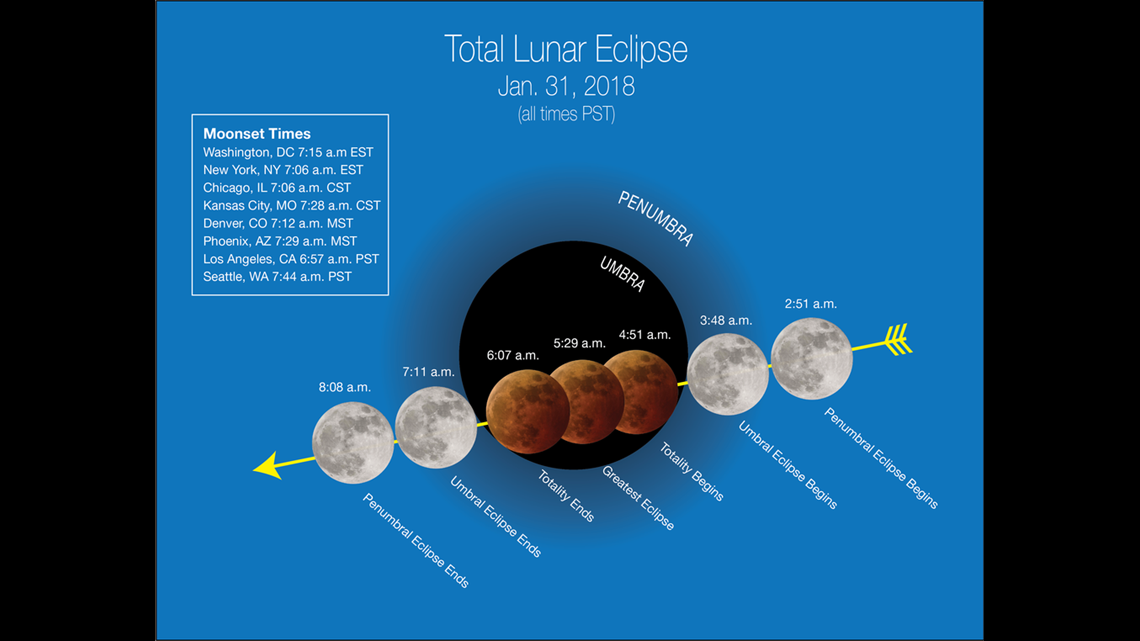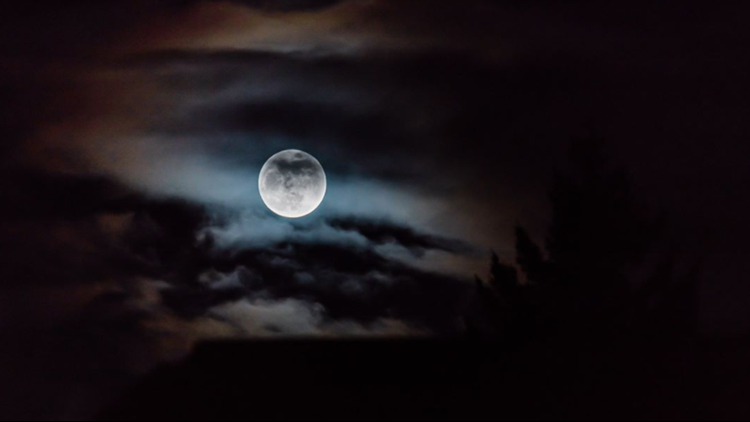Sky watchers had a special treat Wednesday morning when a lunar trifecta filled the night skies: a pre-dawn "super blue blood moon."
The lunar event on January 31 is third in a string of recent "supermoons," when the moon is closer to the Earth in its orbit and appears about 14 percent brighter
It was also a "blue moon," which is the second full moon that happens in the same calendar month. The month's first moon happened on January 1.
It all coincides with a total lunar eclipse, which is called a "blood moon" when the moon is in the Earth's shadow and takes on a reddish tint.
WATCH AND SHARE: The rare Super Blue Blood Moon Eclipse
When celestial events happen in the winter months in the Pacific Northwest, there's a slim chance we will have a clear view, but there was a chance skygazers could see this rare event, according to KING 5 Meteorologist Ben Dery.
The forecast was mostly cloudy, so we did not see it in its entirety, but there were some brief breaks in the cloud deck.
The prime locations for viewing the supermoon and eclipse were:
Best location: Central and Eastern Washington. They will see a mostly clear sky.
Location with a few breaks in cloud deck: Central Puget Sound
Lesser chance: North Interior, Southwest Interior, Cascade foothills
Here's the complete eclipse timeline:
Partial eclipse begins: Wednesday at 3:48 a.m.
Total eclipse: 4:51 a.m. to 6:07 a.m. (1 hour, 16 minutes)
Partial eclipse ends: 7:11 a.m.
This rare trilogy of lunar events hasn't happened in more than 150 years, according to earthsky.org. The last "Blue Blood Moon" was recorded back in March 31, 1866.


Related:



